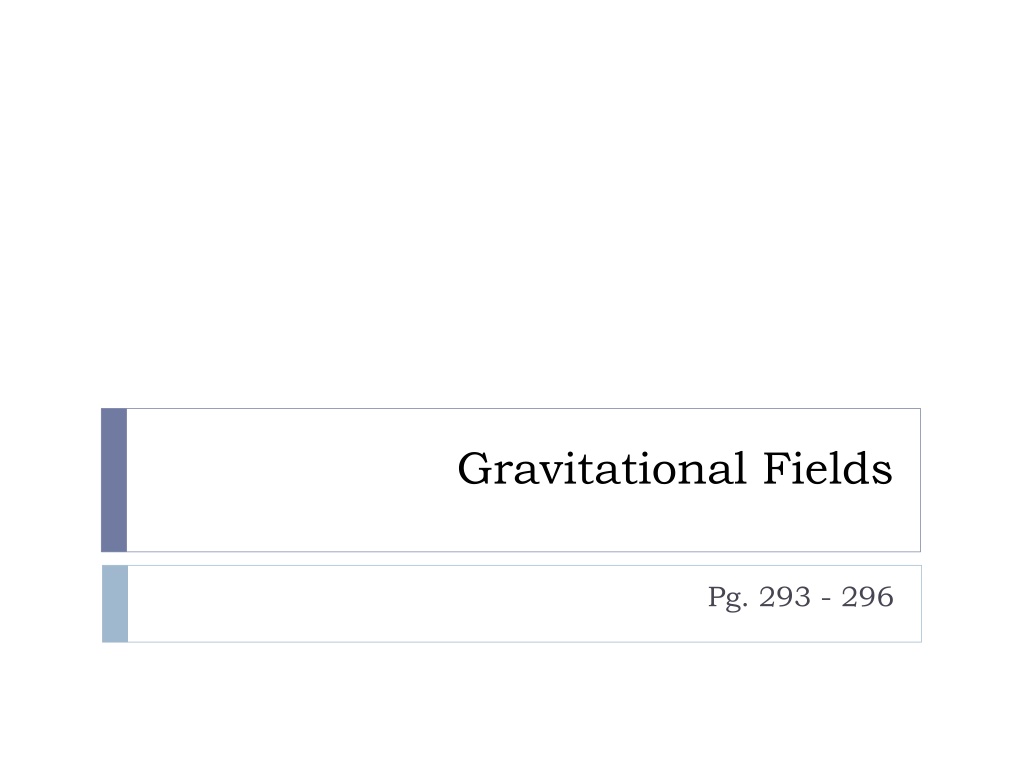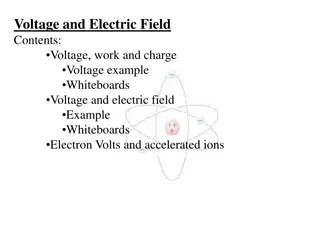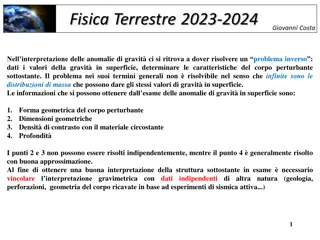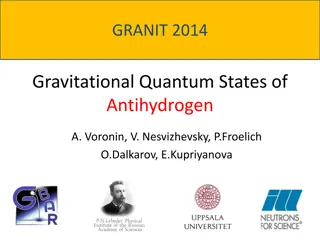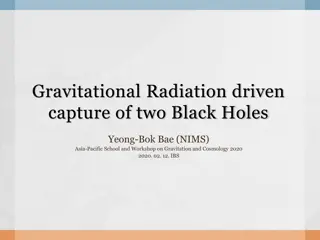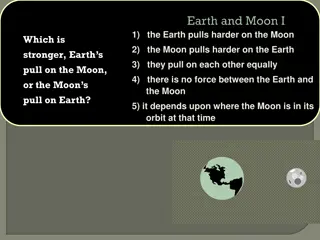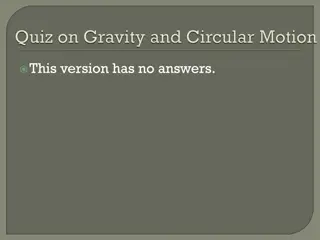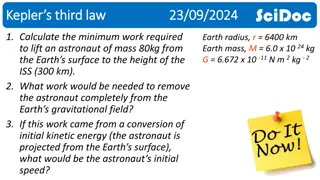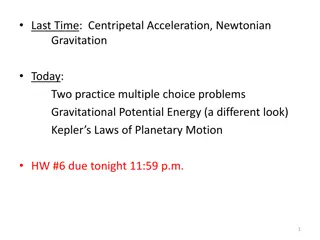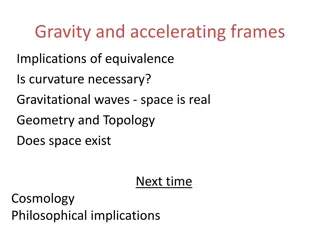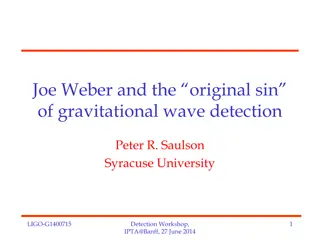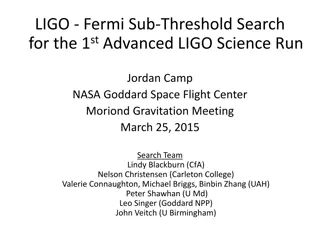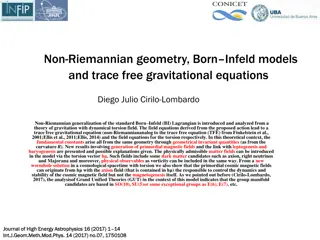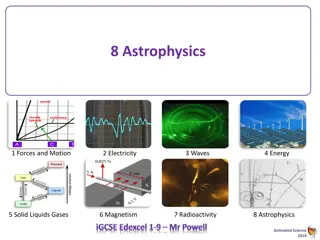Gravitational Fields
Delve into the intricate world of gravitational fields as you explore the concepts and phenomena associated with this fundamental force. Understand how mass influences the space around it, creating the gravitational field that governs the motion of objects. Discover the significance of gravitational fields in the context of celestial bodies and their interactions. Gain insight into the mathematical formulations and practical applications of gravitational fields in various scientific disciplines.
Download Presentation

Please find below an Image/Link to download the presentation.
The content on the website is provided AS IS for your information and personal use only. It may not be sold, licensed, or shared on other websites without obtaining consent from the author.If you encounter any issues during the download, it is possible that the publisher has removed the file from their server.
You are allowed to download the files provided on this website for personal or commercial use, subject to the condition that they are used lawfully. All files are the property of their respective owners.
The content on the website is provided AS IS for your information and personal use only. It may not be sold, licensed, or shared on other websites without obtaining consent from the author.
E N D
Presentation Transcript
Gravitational Fields Pg. 293 - 296
Gravitational Fields The universal law of gravitation tells us that at any point in space surrounding a massive object, such as Earth, we can calculate the gravitational force on a second object sitting at that point in space
Gravitational Fields A vector exists at every point in space surrounding the central object, pointing toward it and depending on the object s mass and the distance from its centre The gravitational field of the central object can be represented by this collection of vectors that are all directed radially inward toward the mass **note: a gravitational field exerts attractive forces on objects with mass
Gravitational Field Field of force that exerts in a region of space around an object Is a vector quantity (g) Exerts an attractive force on objects with a mass Can be represented by a series of lines directed radially inward toward the mass Note: The fundamental concept is that a field is a property of space. An object influences the space around it, setting up either a gravitational, electrical or magnetic field. The object producing the field is called the source . This field in turn exerts a force on other objects located within it.
Gravitational Field Strength The strength of the field, or the gravitational field strength, is the force of attraction per unit mass of an object placed in a gravitational field On Earth, the gravitational field strength is ~ 9.8 N/kg. Notice that this has the same magnitude as the acceleration due to gravity on Earth s surface, and this has the same symbol, g.
Gravitational Field Strength For spherical objects, the strength of the gravitational field at a distance from the surface is the same whether the mass actually fills its volume (a) or sits at a point in the centre (b) To calculate the gravitational field strength as a function of a central spherical mass, we combine Newton s second law (F = ma) with the universal law of gravitation
Gravitational Field Strength This equation holds true for any object in a gravitational field If the object is near any large celestial body with mass, m, we can replace the mass of the planet in the equation and generalize it
Gravitational Field Strength Force of attraction per unit mass (g = 9.8 N/kg on Earth)
Practice 1. Calculate the magnitude of the gravitational field strength on the surface of Saturn, assuming that it is perfectly spherical with a radius of 6.03 x 107m. The mass of Saturn is 5.69 x 1026kg 2. On the surface of Titan, a moon of Saturn, the gravitational field strength has a magnitude of 1.3 N/kg. Titan s mass is 1.3 x 1023kg. What is Titan s radius? 3. Suppose that an object expanded until its radius doubled, while its mass stayed the same. Determine the effect on its gravitational field strength. 4. Suppose that the mass of a planet doubled but its radius stayed the same. Determine the effect on its gravitational field strength Textbook pg 296, #5, 7 (read the textbook pages first)
